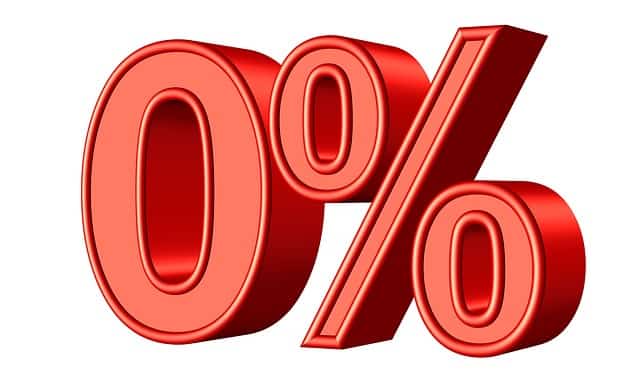You have probably had a savings account for as long as you can remember. Maybe as a kid you deposited your allowance, or earnings from a lemonade stand. Then as a teen, money earned from babysitting or a part-time job. But now that you’re an adult, there are other savings options available to you.
Traditionally, banks had physical bricks-and-mortar branches that you went to to deposit and withdraw your money. More recently, we’ve seen online banks really take off, such as Tangerine, motusbank, EQ Bank, Simplii Financial, Motive Financial, and more. And the traditional “big banks” also have online banking too.
This is the first article in a series on saving vs investing. See also:
This post may contain affiliate links, which means I make a small commission if you decide to purchase something through that link. This has no cost to you, and in some cases may give you a discount off the regular price. If you do make a purchase, thank you for supporting my blog! I only recommend products and services that I truly believe in, and all opinions expressed are my own. As an Amazon Associate I earn from qualifying purchases. Please read my disclaimers for more information.
NOTE: I mention a number of savings and investment options in this article. This in NO WAY should be taken as an endorsement or recommendation of these items! Please consider your own situation before making any savings or investment decisions. See my Terms and Conditions for more information.
What is the Difference Between Saving and Investing
Savings do not have any risk of losing money. You deposit funds, and in the future you have at least that amount to take out again. Savings typically have very low rates of return, because they are no risk.
In addition, savings are typically guaranteed by the Canadian Deposit Insurance Corporation (CDIC). It is a federal crown corporation. That means it is owned and operated by the Canadian government. The CDIC insures savings of up to $100,000 in Canadian funds, held in savings or chequing accounts at CDIC member institutions. Coverage is free and automatic – you don’t have to pay anything or do anything to be insured. Read more about CDIC. Deposits in credit unions, trust and loan companies, and caisses populaires, are covered by provincial deposit insurance plans. In the United States, the FDIC provides similar coverage.
Investing does carry a risk of losing money. Investments are NOT insured. You buy an investment product, and hope that it increases in value. But sometimes it does not, and in the end you have less money than you started with. To compensate investors for taking that risk, on average investments have higher returns than savings.

Savings
Saving in Bank Accounts
The true risk of saving instead of investing, however, is that your purchasing power goes down because of inflation. That is, if you save $1,000 today at 0.5% interest, you have $1,005 in one year. But the groceries that cost $1,000 today would cost $1,020 in a year from now, if inflation is 2%. So even though you have more money in a year than you do now, it purchases less.
Chequing Accounts
Chequing accounts are one type of “saving” that generally earn no interest at all. They do allow you to write cheques. But with the variety of payment methods we have now, that may not be a feature you need. They also allow debit payments at retailers, a feature that savings accounts generally don’t have. You want to keep enough money in a chequing account so that you don’t go into overdraft (charge something but you don’t have enough in your account to pay for it). But you don’t want to keep a lot of extra cash here.
Savings Accounts
Savings accounts pay a very low rate of interest, typically somewhere about 0.05%. That is, if you keep $1,000 in the account for a full year, you will receive 50¢. Woohoo! Don’t spend it all in one place! This is a slightly better place to keep extra cash, as compared to a chequing account. Again, you want to keep a buffer so that you don’t go into overdraft. But if you have a lot of extra cash, consider something with a higher return.
Note that banks will often link your chequing and savings account so that if you go into overdraft in one, it will move funds from the other account. This will save you NSF (non-sufficient funds) fees that can be $50 or more. Check with your bank. TIP: If you do accidentally incur an NSF penalty, fix it right away by moving money into the right account and paying that bill. Then call the bank, apologize for your mistake, and ask them to reverse the charge. This will work once, but ensure it doesn’t happen again soon by keeping enough funds in your accounts.
Ads by RateSupermarket.ca
High Interest Savings Accounts
HISA may have interest rates that are just slightly higher than inflation. As of the time I’m writing this article, the highest rate at RateSupermarket is 3.25%, which is exceptionally high. Clicking through shows this is a promotional rate that falls to 1.5% at the end of 6 months. The second highest is 2.50%, just to show you how unusual that promo rate is. At 2.50%, your $1,000 will earn $25 in interest after one year. Not “get rich quick” kind of money. But way better than the 50¢ from a regular savings account.
With chequing and savings accounts, you can generally deposit (put in) and withdraw (take out) you money whenever you wish and as many times as you wish. HISAs or other savings accounts may apply penalties if you withdraw too many times in a month. This is not advisable, because you can spend more on fees than you earn in interest.
GICs
Guaranteed Investment Certificates (GICs) are a different type of savings designed for long term commitments. GICs are typically insured by CDIC or provincial deposit insurance.
- They have higher minimum amounts required to deposit, generally $1,000.
- You need to pick the term of the savings, generally 1-5 years. The long you choose, generally the higher the interest rate.
- You also need to choose cashable/redeemable or not. That means, do you want to have the option of withdrawing some or all of your money before the end of the term? Or are you willing to lock it in for the full term? Locking it in will get you a higher interest rate.
- Lastly, will you have the interest compound, or pay out to your bank account. That is, if the term is 5 years, will the interest earned each year be added to the initial amount. Then you earn interest on your interest! This is called compound interest.
Example
The highest GIC rate showing today at RateSupermarket is 3.15% for a 5-year, non-redeemable deposit of at least $1,000. If you deposit $1,000 into this GIC today, at the end of 5 years you have nearly $1,168. This table shows you how you earn interest on your interest.
| Year | Balance at Start of Year | 3.15% Interest | Balance at End of Year |
| 1 | $1,000.00 | $31.50 | $1031.50 |
| 2 | $1,031.50 | $32.49 | $1,063.99 |
| 3 | $1,063.99 | $33.52 | $1,097.51 |
| 4 | $1,097.51 | $34.57 | $1,132.08 |
| 5 | $1,132.08 | $35.66 | $1,167.74 |
Other Savings Products
There are a few other savings products, such as term deposits and short-term investment certificates that pay interest rates higher than a typical savings account but lower than GICs. The rates seem to be lower than HISAs, so probably not worth looking into.
Banks vs Trust Companies and Credit Unions
Banks
Canadian banks are for-profit institutions, with shares traded on the Toronto Stock Exchange. You can be a bank customer without owning stock, or own stock of a bank where you are not a customer. In Canada, the “Big 5” banks are:
- Royal Bank of Canada (RBC)
- Toronto-Dominion Bank (TD)
- Bank of Nova Scotia (Scotiabank)
- Bank of Montreal (BMO)
- Canadian Imperial Bank of Commerce (CIBC)
There are numerous other smaller Canadian banks and foreign banks with subsidiaries in Canada.
Non-Banks
Trust and loan companies, caisses populaires, and credit unions offer many of the same savings products as banks. Their savings products are provincially insured instead of CDIC insured.
The main difference is how they are structured and regulated. Credit unions are co-operatives that are owned by customers, and run on a non-profit basis. Profits are reinvested back into the business, issued as dividends to members, or donated to community charities. A credit union may require you to live, work, or attend school in the local area. Some are aimed at people in specific professions, such as farmers or teachers. Credit unions have branches, online banking, and ATMs (bank machines).
Trust Companies can administer estates, trusts, and pension plans. Banks cannot provide this function unless they create a trust subsidiary.
Types of Government Savings Plan Accounts
In addition to chequing and savings accounts, you may wish to open a TFSA, RRSP, or RESP account. Note that these are types of accounts, and you can save or invest within each of them. You can open these accounts at your bank, trust company, credit union, full-service brokerage, or self-directed brokerage.
In every case, the word “savings” is in the middle of TFSA, RRSP, and RESP, but they can be used for both saving and investing. Within each type of account you can have a combination of savings with cash (earning low income), high-interest savings account (earning a little more income), GICs, bonds, stocks, mutual funds, ETFs, and more.

TFSA
A Tax-Free Savings Account (TFSA) can be used for saving or investing. It is a government-created program that started in 2009. Anyone age 18 and older, with a social insurance number, can open an account. Any gains within the account – interest, dividends, capital gains – is tax-free. That is, you do NOT have to include it as part of your taxable income for income taxes.
Because of it’s use as a legal tax shelter, there are limits to how much you can contribute each year. And penalties if you contribute too much. In 2019 you can contribute up to $6,000. If you have missed contributing in prior years, you can transfer more to your account. There are a few technical things you need to know about TFSAs and until I write an entire article about them, you can read more on the Government of Canada’s website or ask at your bank.
If you earn interest in a savings account, HISA, GIC or other, you must claim it on your income taxes UNLESS it is in a TFSA.
RRSP
A Registered Retirement Savings Plan (RRSP) is a government program for tax deferral. It helps Canadians to put aside money for their own retirements.
Your employer automatically deducts income tax from each paycheque, and submits it to the government. When you contribute to an RRSP, and include the receipt on your income tax the following March or April, the government will refund you the income tax deducted on those contribution funds. However, when you retire and are no longer working, you will withdraw those funds and pay income tax at that time.
In general, RRSPs should only be used by those who are in a higher marginal tax bracket now than they expect to be when they retire. See taxtips.ca for the tax brackets and marginal tax rates in your province if you are curious.
There are limits to how much you can put in your RRSP based on your earnings the previous year and any unused contribution room from prior years. In 2019, the contribution limit is 18% of the income you reported from your 2018 tax return, up to a maximum of $26,500. You can find your personal contribution room on your Notice of Assessment that you receive after submitting you income taxes, or online at the Canada Revenue Agency. Read more at the Government of Canda’s website.
Example
If you live in Ontario and earn $100,000 per year in salary and bonus, your marginal tax rate is 43.41% in 2019. For the last $1,000 earned, you would pay $434.10 in tax. If you deposit $1,000 into an RRSP, you will get a tax refund of $434.10 on that savings. When you retire, let’s say your annual income is $70,000. The marginal tax rate at that income level is 29.65%. At that time, you withdraw $1,000 from your RRSP, and you pay only $296.50 in income tax.
RESP
Registered Education Savings Plans (RESP) is another government program designed to help families save for children’s post-secondary education costs.
The RESP program has two great benefits:
- When you contribute funds to an RESP, the government will grant you 20% of your contribution. If you transfer $1,000 to your child’s RESP, the government will add a $200 grant for free!
- Withdrawals of grants and income from the RESP are taxed at the student’s marginal income tax rate, which is usually much lower than the parents’ marginal tax rate.
There are limits and rules about RESPs that you can read on the Government of Canada’s website.
You can also read my own article about withdrawing funds from your RESP.

When Would you Use Each of these Savings Options
Types of Savings Products
- Chequing and savings accounts are best for everyday banking, to pay bills, deposit paycheques, and so on. They provide immediate access to your money when you need it. They pay little or no interest, so are not the best choice for long-term savings.
- High Interest Savings Accounts may be slightly harder to access your money or have restrictions on the number of withdrawals you can make each month without a penalty. Therefore, this is best for saving for short-term goals up to about 3 years, and for your emergency fund. They pay higher interest rates than other bank accounts.
- GICs pay higher rates if you choose to lock in, so these are best for medium-term savings goals such as 1-5 years. That means it’s not as “liquid” as your bank accounts or HISA – you can’t easily access your funds. Your investment and interest rate are guaranteed so you have no risk of investment loss.
Government Savings Plans
In your government plans, you should consider using a mixture of investing products and savings products. Savings products in TFSAs, RRSPs, and RESPs have two main uses:
- Decrease the overall volatility risk of the account. That is, stocks may go up and down, but the portion of your account in a savings product is guaranteed to increase but at a low rate. You won’t benefit from the highest highs, but you’ll be protected from the lowest lows. The higher proportion in savings, the lower your volatility.
- Lock in your funds when your time horizon is short. That is, as you get closer to needing those funds, you should have a higher proportion in a savings product to protect against loss. Imagine if the year before post-secondary, there was a stock market crash! You could lose $10,000 right before you need to withdraw those funds, and no time to wait for the stock market to recover.
Savings offers a no-risk way to grow your money for short-term goals such as vacations, buying a car, upgrading your employment skills, or down payment on a house.
Related Reading
Learn more about savings in my book reviews for Broke Millennial and The Latte Factor!




